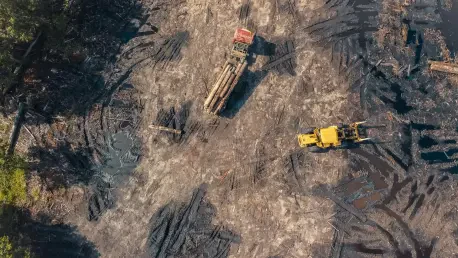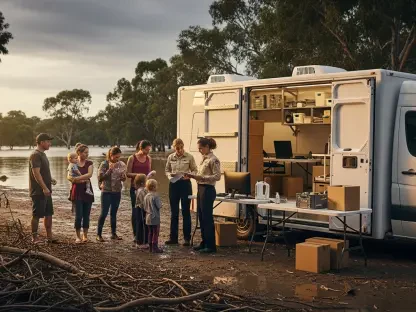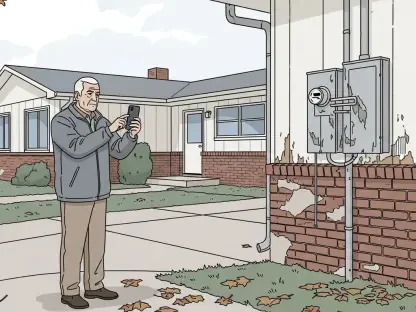Imagine a world where devastating hurricanes, raging wildfires, and unprecedented earthquakes are no longer rare anomalies but frequent threats that challenge the very foundation of risk management. This stark reality is driving the insurance industry to rethink its strategies, particularly in the excess and surplus (E&S) lines, as climate risks intensify. On September 25, a pivotal panel discussion at ClimateTech Connect in New York brought together industry leaders to address this pressing issue, spotlighting E&S insurance as a critical tool for adaptation. The event underscored the urgent need for innovation and collaboration to safeguard businesses and communities against environmental uncertainties, setting the stage for a transformative dialogue.
The significance of ClimateTech Connect lies in its ability to unite thought leaders, innovators, and stakeholders under one roof to tackle the intersection of technology and climate challenges. With insurers facing mounting pressures from natural disasters, the panel offered a platform to explore how E&S lines can fill gaps left by traditional insurance models. Attendees gained insights from prominent figures such as Angela Grant, Chief Legal Officer of Palomar, and Michael Gulla, CEO of Adaptive Insurance, whose expertise illuminated pathways for growth and resilience in a rapidly changing landscape.
Key Highlights from the ClimateTech Connect Panel
Urgent Push for Innovation in Insurance Models
The panel discussion kicked off with a compelling critique of current industry practices, emphasizing that complacency is no longer an option. Angela Grant delivered a sharp observation about the prevalence of “me-too” insurers who simply mimic existing rates and forms rather than pioneering new approaches. She argued that such a mindset hampers progress at a time when climate-driven events demand bold, creative solutions to protect vulnerable regions.
Delving deeper, the conversation revealed a consensus on the untapped potential of data as a game-changer for E&S insurance. Panelists highlighted that insurers have access to vast datasets that, if leveraged effectively, could redefine risk assessment for catastrophes like hurricanes and earthquakes. This push for innovation resonated throughout the room, signaling a collective recognition that outdated methods must give way to forward-thinking strategies to meet escalating demands.
Navigating the Balance Between Innovation and Regulation
Another critical theme that emerged was the delicate balance between embracing cutting-edge technology and adhering to regulatory standards. Angela Grant stressed that even within the flexible realm of E&S insurance, compliance remains a cornerstone for sustainable growth. Her perspective underscored the importance of forging a partnership between regulatory frameworks and technological advancements to ensure that new solutions are both effective and legally sound.
This duality sparked a broader dialogue among panelists about the challenges insurers face in navigating complex legal landscapes while striving to innovate. The discussion painted a clear picture: while E&S lines offer room for experimentation, success hinges on aligning progressive ideas with oversight mechanisms. This balance is seen as essential to fostering trust and stability in a sector poised for expansion amid environmental upheavals.
Collaborative Strategies Explored in Interactive Sessions
Beyond the main panel, ClimateTech Connect featured engaging workshops and breakout sessions that allowed participants to dive into actionable strategies. These interactive forums provided a space for insurers, tech experts, and other stakeholders to brainstorm ways to harness data and technology for better risk management. The hands-on nature of these sessions brought theoretical discussions to life, offering practical takeaways for real-world application.
One notable aspect of these collaborative efforts was the emphasis on building partnerships across industries to drive innovation in E&S programs. Attendees explored how shared platforms could facilitate the exchange of insights and resources, ultimately strengthening the sector’s ability to respond to climate threats. This collaborative spirit reinforced the event’s overarching message that collective action is vital for transformative change.
Spotlight on Cutting-Edge Technologies for E&S Solutions
The event also showcased an array of emerging technologies designed to revolutionize E&S insurance offerings, captivating the audience with their potential. Michael Gulla highlighted specific tools and platforms that enable insurers to develop tailored products for niche risks exacerbated by climate change. These innovations stood out as tangible examples of how technology can bridge gaps in coverage and enhance market responsiveness.
Exhibitions during the conference further amplified this focus, displaying solutions that integrate modern data analytics with distribution networks to streamline product delivery. Such advancements were presented as critical enablers for insurers aiming to stay ahead of evolving risks. The enthusiasm surrounding these technologies underscored their role as catalysts for growth in a sector under pressure to adapt swiftly.
Looking Ahead: E&S Insurance in a Climate-Challenged World
Reflecting on the ClimateTech Connect panel, the event proved to be a defining moment for the E&S insurance industry, illuminating both challenges and opportunities in the face of mounting climate risks. The insights shared by industry leaders painted a roadmap for the next five to ten years, from this year onward, emphasizing that growth will depend on integrating technology, prioritizing data-driven decisions, and maintaining regulatory integrity. As environmental uncertainties continue to reshape the risk landscape, the discussions held in New York served as a clarion call for proactive adaptation.
Moving forward, insurers were encouraged to invest in innovative E&S programs that address specific climate vulnerabilities while fostering collaborations with tech providers to enhance capabilities. A key takeaway was the need to build resilient frameworks that anticipate future threats rather than merely react to them. By embracing these strategies, the industry can position itself not just to survive but to thrive in an era defined by environmental challenges, ensuring protection for communities and businesses alike.









